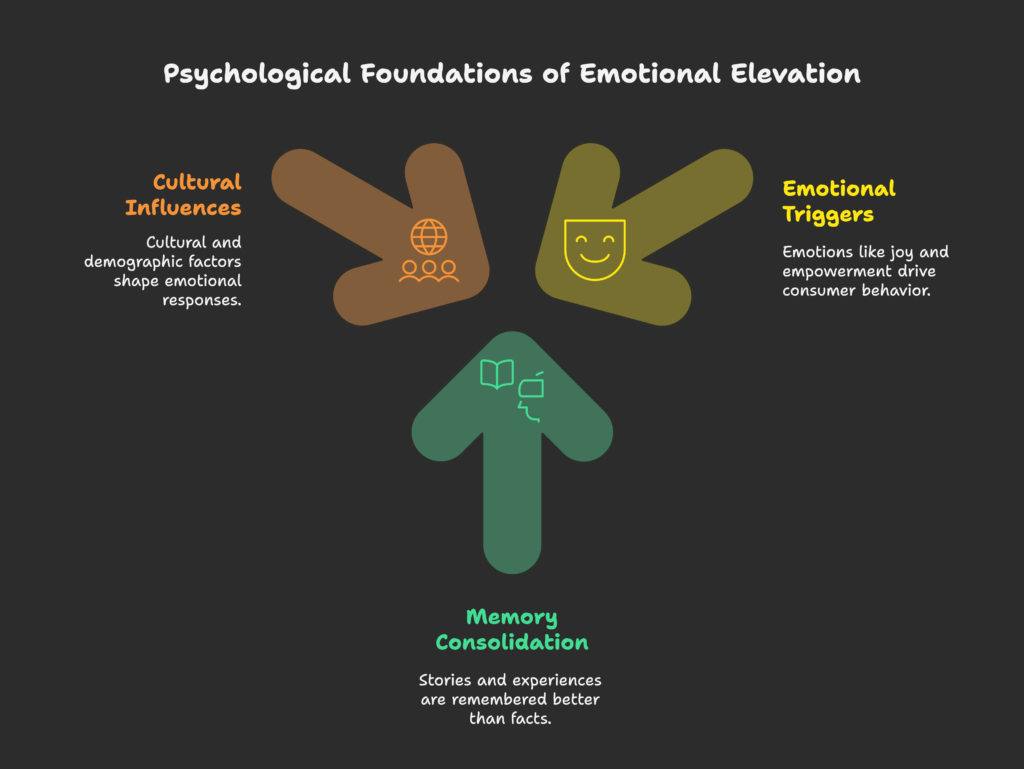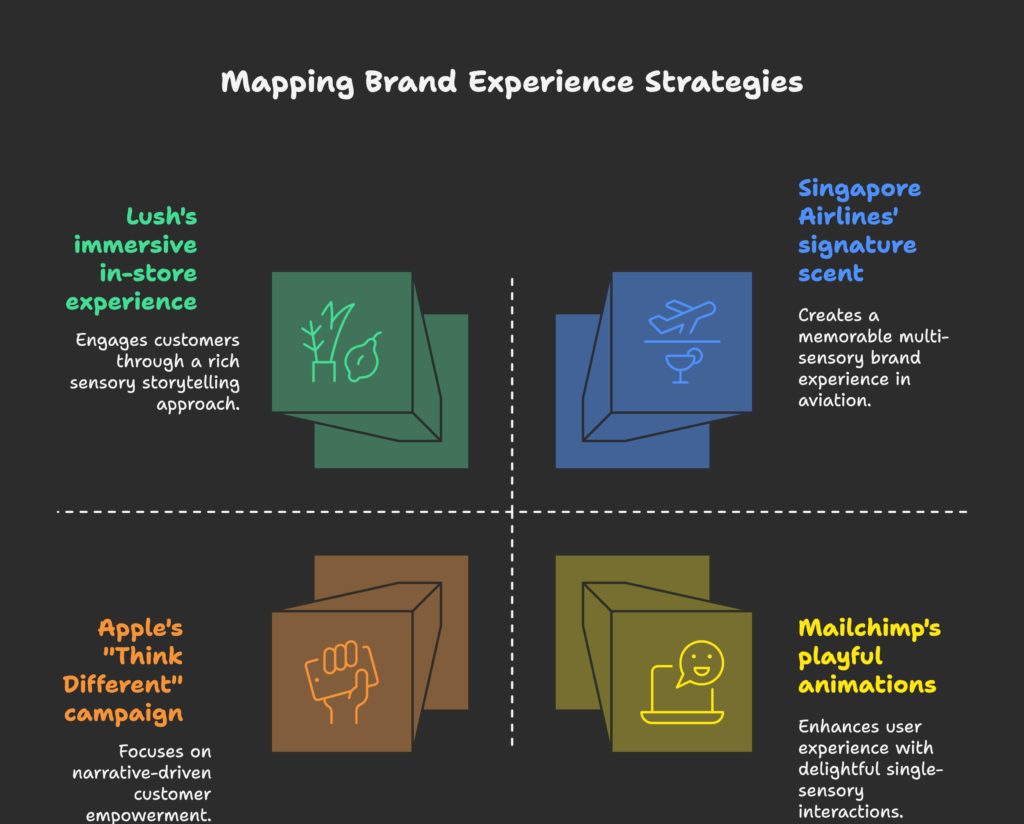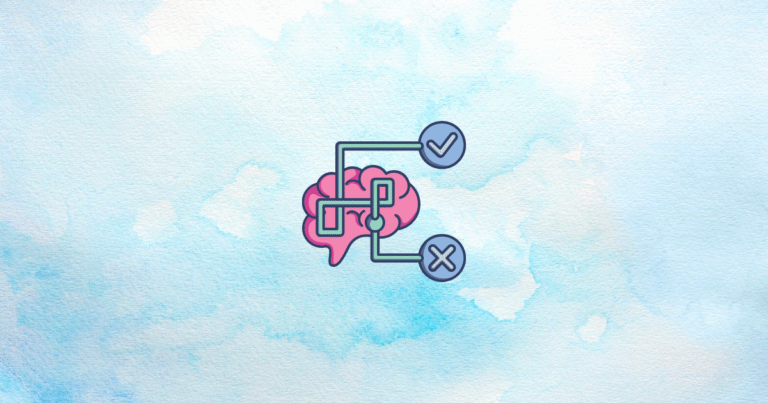Have you ever experienced a moment with a brand that gave you goosebumps? That time when an advertisement brought tears to your eyes, or when unboxing a product felt like unwrapping a gift from a close friend? These aren’t accidental moments—they’re carefully crafted experiences designed to create an emotional connection between you and the brand.
In today’s crowded marketplace, where consumers are bombarded with thousands of marketing messages daily, creating these meaningful moments isn’t just nice to have—it’s essential for brand survival. But how exactly do the world’s most beloved brands consistently create these powerful emotional connections?
By reading this article, you’ll discover:
- Why emotions drive buying decisions more powerfully than logic
- The science behind memorable brand experiences
- Practical strategies to elevate your brand’s emotional impact
- How technology can help scale these meaningful moments
- Real-world examples of brands that have mastered emotional elevation
Ready to transform your customer relationships from transactional to transformational? Let’s dive in!
Introduction to Emotional Elevation in Branding
Before we explore advanced strategies, let’s first understand what emotional elevation actually means and why it matters to your business. In this section, we’ll unpack the concept, look at the brain science behind it, and examine why it’s becoming a business imperative.
Defining Emotional Elevation
Emotional elevation goes beyond simply making customers feel good about your brand. It’s about creating peak, transformative experiences that forge lasting connections. While traditional emotional branding might focus on consistent positive feelings, emotional elevation targets those special moments that customers remember and share with others.
The numbers speak for themselves: brands that successfully leverage emotional elevation see 50% higher customer lifetime value. These aren’t just happy customers—they’re loyal advocates who return again and again.
The Neuroscience of Elevated Experiences
Our brains are wired for emotional connection. When we experience something meaningful:
- Dopamine is released, creating a sense of reward and anticipation
- The hippocampus activates, helping form lasting memories
- Multiple brain regions light up simultaneously, creating richer memory imprints
This is why story-driven marketing campaigns activate seven times more brain regions than fact-based messaging. Our brains simply process stories differently than data.
The Business Imperative
Today’s consumers expect more from the brands they support. Research shows that 70% of consumers prioritize brands that align with their personal values. Take Dove’s “Real Beauty” campaign as an example—by tapping into women’s desire for authentic representation, they drove 20% sales growth while creating meaningful social impact.
Now that we understand what emotional elevation is and why it matters, let’s explore the psychological foundations that make it work. Are you ready to peek inside the customer’s mind?
Psychological Foundations of Emotional Elevation
To create meaningful brand moments, we need to understand what makes people tick. In this section, we’ll explore the emotional triggers that drive decision-making, how memories form around brand experiences, and how cultural factors influence emotional responses.

Emotional Triggers in Decision-Making
Different emotions drive different consumer behaviors. Let’s look at some powerful emotional triggers and the brands that leverage them effectively:
- Joy & Nostalgia: Coca-Cola’s “Share a Coke” campaign personalized bottles with common names, triggering both joy at seeing your name and nostalgia for shared experiences with friends and family.
- Empowerment: Nike’s iconic “Just Do It” campaign doesn’t just sell shoes—it sells the feeling of personal achievement and breaking barriers.
- Belonging: Xiaomi built a loyal following by creating community-driven product development, making customers feel like part of an exclusive club rather than just consumers.
The Role of Memory Consolidation
Creating a memorable moment isn’t just about the intensity of emotion—it’s about how that moment gets stored in memory. Research shows that stories are remembered 22 times better than facts alone. Additionally, memories are reinforced during sleep, which is why experiences that make an impact before bedtime often become more solidified in our minds.
Smart brands understand this process and create experiences designed to be remembered long after the interaction ends.
Cultural and Demographic Influences
Not all consumers respond to emotional triggers in the same way. Cultural background plays a significant role:
- People from collectivist cultures (like many Asian countries) often respond more strongly to messages about family and community
- Those from individualist cultures (like the US) may connect more with messages about personal achievement
Age also matters. Gen Z, for example, shows a strong preference for experiential interactions over purely transactional ones. They want to feel part of something bigger when they engage with brands.
Now that we understand the psychological drivers behind emotional connections, let’s explore practical strategies to craft these elevated brand moments. Are you ready to turn theory into action?
Strategies for Crafting Elevated Brand Moments
Knowing the psychology is one thing—but how do you apply it? In this section, we’ll explore proven frameworks and techniques to create those special moments that customers remember and share.

Storytelling Frameworks
Stories are the oldest and most powerful way humans connect. Here are three storytelling frameworks that create emotional elevation:
- The Hero’s Journey: Apple’s “Think Different” campaign positioned customers as the heroes of their own stories, with Apple products as the tools helping them achieve greatness. This framework works because it places the customer—not the brand—at the center of the narrative.
- Sensory Layering: Cosmetics retailer Lush creates immersive in-store experiences by engaging multiple senses simultaneously. From the vibrant colors to the distinctive smells that waft out onto the street, every sensory detail tells part of their natural, handmade story.
- AI-Driven Personalization: Volkswagen has experimented with adaptive narratives that change based on the viewer’s interests and past behaviors, creating a unique story experience for each customer.
Experiential Marketing Techniques
Moving beyond traditional advertising, experiential marketing creates memorable moments through direct engagement:
- Immersive Retail: Korean eyewear brand Gentle Monster transforms their stores into art installations that change regularly, making the shopping experience feel like visiting a museum.
- Micro-Interactions: Mailchimp uses playful animations and congratulatory messages when users complete tasks, turning mundane activities into small moments of delight.
- Gamification: Spotify Wrapped turns user data into a personalized year-in-review experience that people eagerly share, creating both nostalgia and social connection.
Multi-Sensory Engagement
The most memorable experiences engage multiple senses. Consider these approaches:
- Singapore Airlines created a signature scent called “Stefan Floridian Waters” that infuses everything from hot towels to the cabin atmosphere, creating an instantly recognizable sensory signature.
- Sonic branding elements like Intel’s five-note chime or Netflix’s “ta-dum” sound become powerful memory triggers even when the visual brand isn’t present.
We’ve covered the core strategies for creating emotional moments, but how can technology help scale these experiences to reach millions? Let’s explore the cutting-edge tools making this possible.
Technology’s Role in Scaling Emotional Moments
Creating meaningful moments for a handful of customers is one thing—but how do you deliver personalized emotional experiences at scale? Technology provides powerful solutions, though not without important considerations.
AI and Emotional Analytics
Artificial intelligence is revolutionizing how brands understand and respond to emotions:
- Sentiment analysis tools now scan social media mentions and customer feedback in real-time, allowing brands to adjust campaigns mid-flight based on emotional responses.
- Generative AI can create hyper-personalized narratives that adapt to individual customer journeys, making each person feel seen and understood.
These tools allow brands to move beyond demographic segmentation to emotional segmentation—grouping customers by how they want to feel rather than just who they are.
AR/VR and Immersive Experiences
Extended reality technologies create new possibilities for emotional connection:
- IKEA’s Place app lets customers visualize furniture in their actual homes before purchasing, reducing uncertainty and creating excitement.
- Virtual spaces like Meta’s Horizon Worlds enable brands to create immersive brand experiences that would be impossible in the physical world.
Ethical Considerations
With great power comes great responsibility. As technology makes emotional targeting more precise, important ethical questions arise:
- How do we avoid crossing the line from connection to manipulation?
- What are the privacy implications of tracking emotional responses?
- How transparent should brands be about emotional targeting?
The most successful brands view technology as an enabler of human connection, not a replacement for it.
Now that we have the strategies and technologies in place, how do we know if our efforts are working? Let’s look at how to measure emotional impact effectively.
Measuring Emotional Impact
Creating emotional connections is an art, but measuring their impact is a science. In this section, we’ll explore the tools and metrics that help brands understand if their emotional elevation strategies are working.
Neuroscientific Tools
Advanced measurement tools can now track emotional responses directly:
- EEG (Electroencephalography) measures brain activity to score emotional valence (positive vs. negative feelings) and intensity when consumers interact with brand materials.
- Eye-tracking technology reveals which elements of an advertisement or package design capture attention and trigger emotional responses.
These technologies, once only available in research labs, are increasingly accessible to marketing teams through specialized agencies.
Behavioral Metrics
Customer behaviors often reveal emotional connections better than surveys:
- Dwell time: Emotionally resonant content keeps people engaged 40% longer than purely informational content.
- Social sharing rates: Coca-Cola’s “Share a Coke” campaign led to a 300% increase in user-generated content as people eagerly shared photos of personalized bottles.
- Repeat engagement: How often do customers return to interact with your brand voluntarily?
Longitudinal Studies
The true test of emotional elevation is its lasting impact over time:
- Lululemon’s community-driven programs, like free yoga classes and run clubs, create long-term loyalty that shows up in lifetime value metrics.
- Apple’s ecosystem demonstrates how emotional attachment can lead to “lock-in” across product categories, with emotional connections to one product transferring to others.
The best measurement approaches combine multiple metrics to build a complete picture of emotional impact.
Theory and measurement are important, but nothing beats learning from real-world examples. Let’s explore some fascinating case studies of brands that have mastered emotional elevation.
Case Studies in Emotional Elevation
Nothing illustrates the power of emotional elevation like seeing it in action. In this section, we’ll examine brands that have successfully created meaningful moments, navigated challenges, and adapted their approach across cultures.
Success Stories
Airbnb’s “Belong Anywhere”
Airbnb transformed from a budget accommodation platform to a lifestyle brand by focusing on the emotional desire to experience authentic local culture. Their “Belong Anywhere” campaign shifted the conversation from where you stay to how you feel when you travel. This emotional positioning helped Airbnb command premium prices while creating a community of loyal travelers who see themselves as cultural explorers rather than tourists.
Patagonia’s Environmental Activism
Outdoor clothing brand Patagonia has built deep customer loyalty by connecting purchases to environmental stewardship. Their bold moves—like donating 100% of Black Friday sales to grassroots environmental organizations or their “Don’t Buy This Jacket” campaign urging conscious consumption—create emotional elevation by making customers feel part of a larger movement. The result? A dedicated customer base willing to pay premium prices for products aligned with their values.
Crisis Management
Huawei’s Trust Rebuilding
When facing trust issues in Western markets, technology company Huawei employed a third-party validator strategy. Rather than making direct claims about security, they established transparent review boards with independent experts. This approach acknowledged consumer concerns while creating emotional reassurance through openness.
Heineken’s Pandemic Response
When COVID-19 hit, beer brand Heineken faced the challenge of marketing a social product during social distancing. Their campaigns struck a delicate balance between acknowledging the reality of isolation while offering hope for future reunions. By empathetically addressing the emotional reality of the moment, they maintained connection during a difficult time.
Cultural Adaptation
Almarai’s Ramadan Campaigns
Saudi dairy company Almarai creates specialized campaigns for Ramadan that emphasize family bonds and generosity—values particularly important during this holy month. Rather than simply translating global marketing, they create content specifically designed to resonate with the cultural and emotional context.
Grab’s Localization in Southeast Asia
Ride-hailing app Grab has succeeded across Southeast Asia by adapting their emotional approach to each market. In Indonesia, they emphasize how their service helps navigate chaotic traffic (relief), while in Singapore they focus on efficiency and convenience (satisfaction).
These case studies show the power of emotional elevation, but creating meaningful moments isn’t without challenges. Let’s explore some of the pitfalls brands must navigate.
Challenges and Ethical Risks
Creating emotional connections comes with responsibilities. In this section, we’ll explore the potential pitfalls and ethical considerations that brands must navigate to ensure their emotional elevation strategies remain authentic and respectful.
Over-Commercialization of Emotions
When brands try to capitalize on emotions without authentic connection, consumers quickly detect the disconnect:
- Greenwashing: Brands that make environmental claims without substantive action risk serious backlash, as consumers increasingly research the truth behind sustainability narratives.
- Exploitative Messaging: Campaigns that target vulnerable demographics or appropriate serious social movements for commercial gain can damage brand reputation for years.
The key question brands should ask is: “Are we genuinely committed to the values we’re expressing, or simply exploiting them for commercial gain?”
Cultural Sensitivity
Emotional triggers vary significantly across cultures, requiring careful adaptation:
- Walmart’s failure in Germany partly stemmed from cultural misalignment—practices like employee chanting and greeting customers felt uncomfortable to German shoppers.
- Dove’s body-positive campaigns required significant adaptation for Middle Eastern markets, where different standards of modesty and beauty prevail.
Successful global brands invest in local cultural intelligence rather than assuming emotional triggers are universal.
Understanding these challenges helps brands navigate the complex terrain of emotional marketing. But what does the future hold? Let’s explore emerging trends and innovations that will shape emotional elevation in the coming years.
Future Trends and Innovations
The landscape of emotional branding is evolving rapidly. In this section, we’ll explore emerging trends and innovations that will shape how brands create meaningful moments in the years ahead.
Hyper-Personalization
The future of emotional elevation lies in unprecedented personalization:
- Biometric wearables may soon allow brands to adapt content based on real-time physiological indicators of mood and emotional state.
- Advances in AI will enable personalization that feels genuinely empathetic rather than creepily surveillance-based.
The brands that succeed will strike the perfect balance between personalization and privacy.
Ethical Frameworks
As emotional marketing becomes more sophisticated, ethical guidelines are emerging:
- The European Union is developing regulations requiring transparency in neuromarketing practices.
- Industry leaders are creating self-regulatory frameworks to prevent manipulation.
- Consumer education initiatives aim to help people understand when and how brands appeal to their emotions.
Sustainability Integration
Environmental consciousness is becoming central to emotional branding:
- Brands are finding ways to link product stories to participation in the circular economy.
- Patagonia’s paradoxical “Don’t Buy This Jacket” campaign demonstrated how anti-consumerist messaging can actually strengthen emotional connections with conscious consumers.
The most forward-thinking brands recognize that sustainability isn’t just a feature—it’s increasingly the emotional foundation of consumer relationships.
With these future trends in mind, let’s conclude with strategic recommendations for implementing emotional elevation in your brand strategy.
Conclusion and Strategic Recommendations
We’ve covered a lot of ground in exploring how brands can create meaningful moments that elevate emotions and forge lasting connections. Now, let’s distill these insights into actionable strategies you can implement today.
Key Takeaways
- Emotional elevation requires authenticity—manipulation might work short-term but destroys trust long-term.
- Technology should enhance human-centric storytelling, not replace it.
- The most powerful brand moments align with customers’ values and help them express their identity.
- Measurement matters—what gets measured gets managed, especially when it comes to emotional impact.
Actionable Steps
Start your emotional elevation journey with these concrete steps:
- Conduct emotional journey mapping to identify moments where deeper connection is possible.
- Invest in validation through customer interviews or neuroscientific testing of campaigns.
- Develop ethical guidelines for emotional marketing within your organization.
- Train team members to recognize and create opportunities for emotional connection.
Final Insight
The brands that thrive in the future will be those that make consumers feel seen, not sold to. By creating meaningful moments that elevate emotions, you don’t just build customer loyalty—you become part of your customers’ personal narratives and identity.
Growth Reminder: Looking to implement these emotional elevation strategies in your e-commerce business? Shopify store owners can boost their sales by using the Growth Suite app, which provides tools for creating personalized customer journeys and measuring emotional engagement. Start creating meaningful brand moments that convert today!
References
- Hupbach, A., et al. (2007). Memory consolidation mechanisms. Learning & Memory.
- Yue, X., et al. (2023). Benign envy in influencer marketing. International Journal of Internet Marketing.
- Zhang, Y. (2022). AI-driven emotional storytelling. SSRN.
- Zillion Designs (2025). Sensory brand experiences. Link
- Unbxd (2024). Micro-interactions. Link
- Wikipedia (2024). Emotional branding frameworks. Link
- Lukehurst, C. (2024). Emotional journey mapping. LinkedIn.
- Liu, W., et al. (2023). Lululemon’s community strategy. Semantic Scholar.
- PubMed (2020). Ethical neuromarketing. DOI:10.1093/sleep/zsaa001




